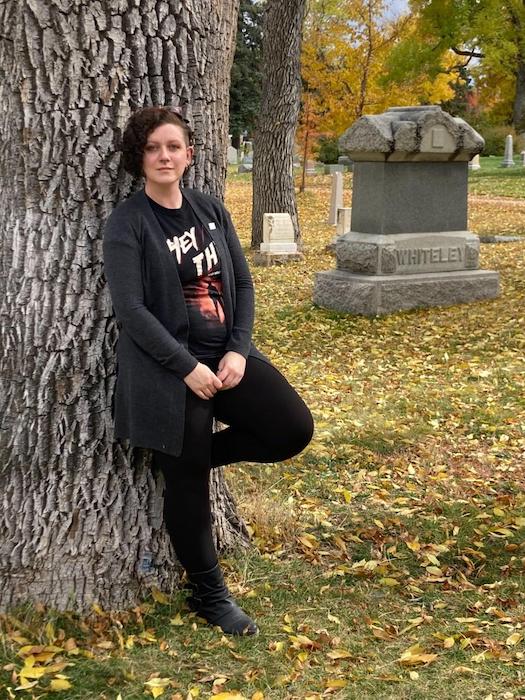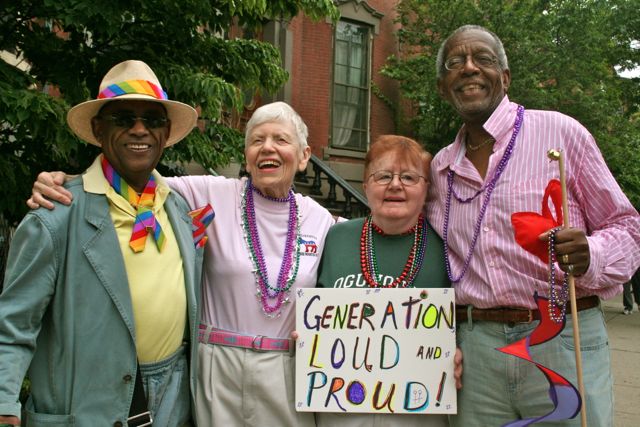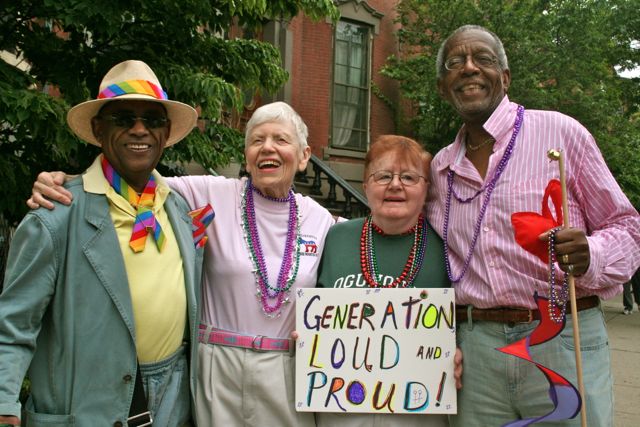
by Corbett Stevenson
When Desiree Celeste begins to feel emotional while discussing the death of their grandmother, they refuse to apologize — instead, they make space to explore and feel the depths of their grief.
“I’m not sorry, actually. I will be mourning her for the rest of my life,” said Celeste, who uses they/them pronouns.
Celeste said that their grandma “always was and always will be” their best friend. When she died after a three year stay in hospice, the emotional care Celeste and their family received was lacking.
“Her death almost killed me, that’s how deep my grief was,” they said. “Don’t get me wrong, the hospice workers were amazing, they did a great job. But I was still left feeling like I needed more. I needed someone outside of that group that could hold space for me and my grief.”
Now, years later, Celeste has built themself into the companion they sorely needed in those dark moments.
Celeste works as a death companion. Also known as a death doula or a death midwife, death companions dedicate themselves to supporting people as they experience grief and death. They can help make funeral arrangements, answer questions about death and dying, organize euthanasia for pets, help process grief years after an event and much more.

Although Celeste officially started their work in 2021, they said they’ve been doing some forms of death companionship for most of their life.
“At pet stores I used to take home animals that smelled like death … that I knew would die. I took them home so I could care for them and make sure they didn’t die alone,” they said.
But everything truly came to a head when Celeste lost their grandmother. On top of the grief of losing their best friend, they never had a chance to come out to her as nonbinary, which added a unique and terrible pain to Celeste’s experience.
“I never came out to my grandma, she never knew who I really was,” they said.
Influenced by that pain, Celeste is a death companion focused on providing services to other LGBTQ+ individuals, for whom death and grief can be exceptionally difficult.
“I worked with a client once to help them organize an at-home euthanasia for their pet. They identified as transgender, and were terrified of reaching out to veterinarians because of their fear of being mis-gendered,” Celeste said. “Talking to the vet, picking up the ashes and even getting the body cremated are all opportunities where they could have been mis-gendered, so I acted as a barrier and shielded them from that pain.”
In another instance, Celeste worked with another transgender client who was the primary caregiver for an individual who had died. Living in a conservative and rural area, it was unsafe for the client to come out, and so they would be facing funeral directors, doctors and other professionals as someone they weren’t.
“When someone is experiencing grief, they’re already so fragile. It’s not fair to have to hide who you are while going through that, so I was there to offer emotional support and be someone who knew what was really going on,” they said. “It’s really important to have someone to explore those feelings with without hiding anything.”

One of the most important aspects of their work is the unique variety of care Celeste offers as a death companion.
“The important thing to remember is that it’s not either/or — you can work with hospice and social workers and still need the support of a death companion,” they said. “When people are experiencing the anxiety that comes with death, they need to feel safe. I’m here to offer a vast and flexible variety of services to help with that.”
Starting in February, Celeste began to offer virtual processing spaces for those who identify as queer. The goal of those spaces, they said, is to offer space and time to talk about death and grief in all its forms.
“When I started my work, I wasn’t focusing on queer clients, but over time I think my clients began to see a piece of themselves in me, and they just started to gravitate towards me.” they said. “A death companion’s care is truly unique, I strive to meet people wherever they’re at.”
Complete Article ↪HERE↩!


